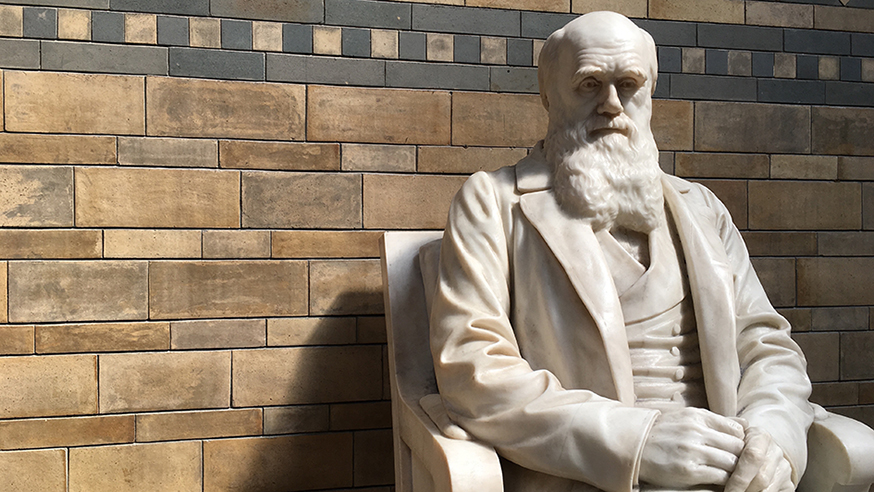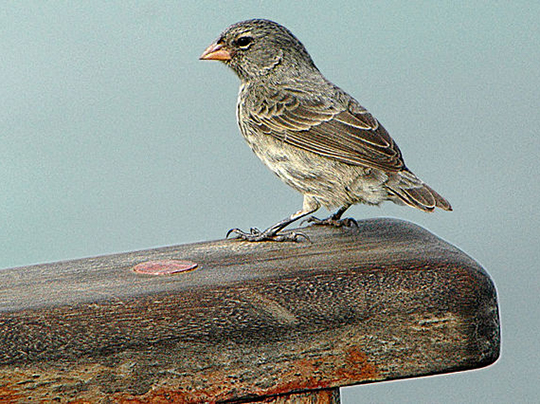
Not all oncologists have bushy white beards, wear wide brimmed hats, or spend their days voyaging to the Galapagos to observe variations in the local wildlife. And yet they should, because modern cancer medicine is deeply underpinned by evolutionary biology.
Setting off aboard the HMS Beagle in 1831, Darwin would make the critical observation that native finches varied widely according to island. Some had large beaks, others large claws; each seemed perfectly adapted to its particular niche. How was it that birds in relative proximity could differ so greatly?
The answer, as Darwin would explain, is that geographical separation leads to
diversification. Local selection pressures cause less well adapted birds to fall of the
perch, allowing better equipped individuals to flourish. Given time, this process can
lead to the generation of new species – a phenomenon known as allopatric speciation.
Cancer cells diversify and adapt
Though many years have passed since On the Origin of Species, this process is of
paramount importance to cancer treatment. One can argue that metastatic cancer cells are analogous to Darwin's finches: they face a new and unknown environment with unique selection pressures and must adapt to survive.
Different populations will have an array of beak and wing sizes, and may not resemble their forebears as closely as once thought.
We see evidence of this in patients. For example, a study by Gerlinger and colleagues found that if a biopsy is taken from a kidney cancer and compared with an area of spread in the lung, genetic diversity akin to that of Darwin's finches can be seen.
Some of the changes in DNA at distant sites will not be present in the primary tumour, suggesting that cancer cells diversify and adapt to the local environment.
Therefore if we rely upon a single biopsy, we attempt to characterise the varied ecosystem of the Galapagos by watching a single bird through a pair of grubby binoculars. This approach is woefully inadequate, and we must therefore ask, how
could this affect cancer treatment?
You can help fund future research leaders by supporting one of our young scientists and clinicians now.
Personalising cancer medicine
One of the defining characteristics of modern cancer medicine is that treatment should be personalised.
With the advent of targeted therapy, treatment can be tailored to specific molecules within a patient's tumour, providing an alternative to the blunderbuss approach of chemotherapy (which is rather like using dynamite to unblock the sink: sure, the blockage will be removed, but one can only guess as to the state of the kitchen afterwards).
Given the diversity of cancer cell populations, we can see that the targets are actually moving left and right, ducking up and down, and sometimes disappearing
entirely from view.
In addition, each treatment is a selection pressure that may cause resistant populations to expand and thrive. We know that in metastatic bowel cancer, for example, these resistant populations can undermine the overall response to targeted treatments.
Therefore finding a single target and firing the arrow may not be enough: the quiver may be stocked with advanced and expensive treatments, yet the arrow wavers on the turbulent winds of genetic adaptation and natural selection.
The future of cancer treatment
How then can we ensure we aim the right treatments at meaningful targets? Essentially, we must embark upon our own Beagle voyage. We must compare the
relative presence or absence of certain targets between metastatic islands, and
attempt to draw wider conclusions about the tumour population as a whole.
One obvious method would be to take multiple biopsies from different disease sites,
though this is resource intensive, technically difficult, and often distressing. We must
therefore look to new technology to guide us.
A promising development is the ability to detect tumour cells circulating in a patient's blood. These cells should theoretically be the product of all sites of disease, and are
therefore closer to a holistic survey of each island's finches.
Though this approach is not yet widely available, nor used outside the research setting, it may well become routine practice in the near future. It has the immediate
advantage of being much less invasive.
There are many ways that this method, deemed the liquid biopsy, may improve cancer treatment. It may be that drugs can be cycled to keep varied tumour populations under control, or combined to target multiple populations simultaneously.
It could also allow us to track changes in targets over time, and therefore switch tactics before treatment resistance occurs.
Whichever it is, our current approach to picking biopsy sites is akin to sailing to the
nearest island and grabbing the biggest bird (and as I learned last Christmas, the biggest bird is not always the most satisfactory). The future of cancer treatment hinges upon the realisation that not all finches are made equal.
